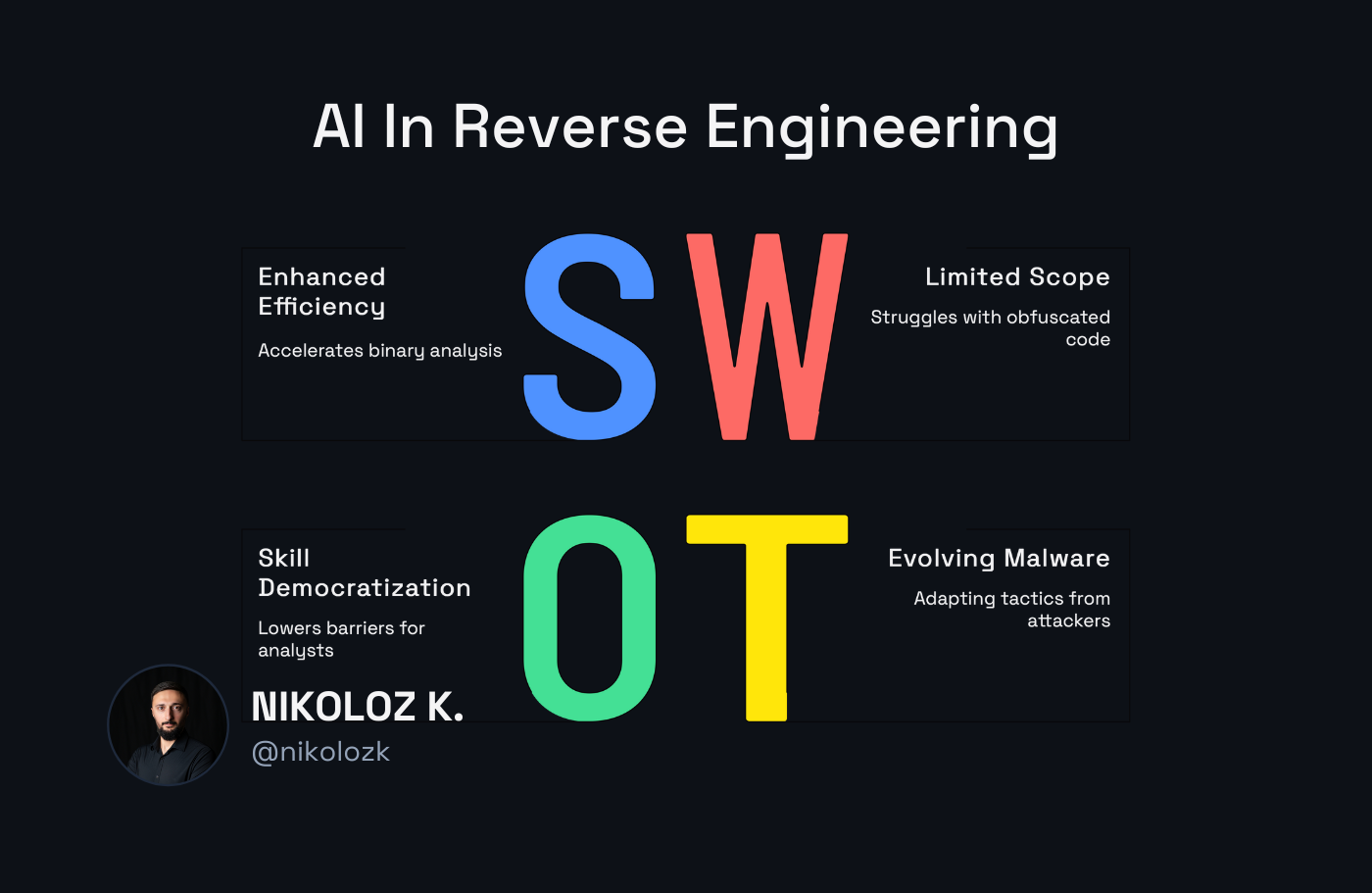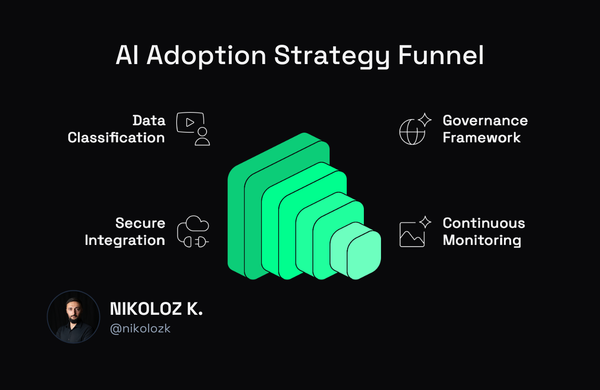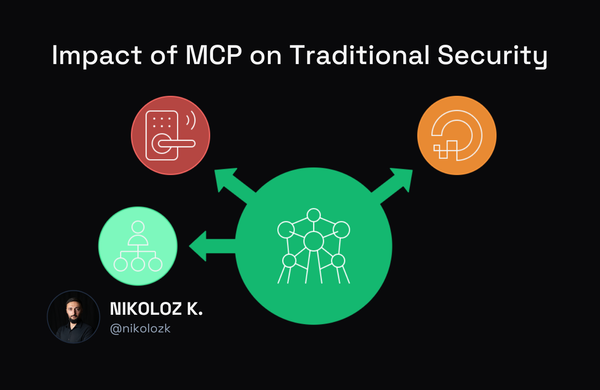AI Can Now Reverse Engineer Malware - 3 Tools For Your Arsenal

Nikoloz Kokhreidze
Three powerful AI tools enable analysts to automate complex binary analysis. See how security teams can reverse engineer without additional headcount.

A few years ago, everyone in cybersecurity was on the same page:"LLMs will never fully reverse engineer a binary." But today we're witnessing a massive change thanks to AI, forcing us to rethink our own assumptions about AI capabilities in reverse engineering.
I can tell you that what's happening now with AI-assisted reverse engineering is a massive big step of how we approach binary analysis and how will attackers improve their capabilities.
In this article, I'll walk you through three AI reverse engineering tools, explain their practical applications, and show you how to leverage them to dramatically improve your team's efficiency (if your team is focusing on reverse engineering that is...). You'll learn how these tools work, their limitations, and how to integrate them into your existing security workflows.
Is Security Blocking Your Next Enterprise Deal?
Let's discuss how fractional CISO services can unlock your pipeline without the full-time overhead.
GhidraMCP

GhidraMCP is a Model Context Protocol server that enables large language models to autonomously interact with Ghidra, NSA's open-source reverse engineering framework. Released by Google researcher Laurie Kirk (LaurieWired), GhidraMCP is kind of a bridge that allows AI to perform complex reverse engineering tasks with minimal human intervention.
What makes GhidraMCP particularly powerful is its ability to:
- Decompile and analyze binaries directly through Ghidra
- List methods, classes, imports, and exports for comprehensive analysis
- Automatically rename methods and data structures based on their functionality
The setup process pretty is straightforward:
- Install the GhidraMCP plugin in Ghidra
- Configure an MCP client like Claude Desktop or 5ire
- Connect your LLM to the Ghidra instance
If complex malware analysis usually takes days, Ghidra can help your team do it much faster. Thanks to MCP, AI is able to identify obfuscated API calls, rename functions based on their behavior, and even detect anti-analysis techniques - all in a matter of hours.
The real breakthrough here isn't just speed; it's the ability to have a conversation with your reverse engineering tool. Instead of manually navigating through assembly code, you can simply ask: "Find all functions that interact with the registry" or "Identify potential encryption routines in this binary."
However, GhidraMCP isn't without limitations. It works best with well-structured binaries and can struggle with heavily obfuscated code. The quality of analysis is also directly tied to the capabilities of the underlying LLM - Claude Sonnet 3.7 will give you significantly better results than any other model.
Radare2 AI

While GhidraMCP focuses on GUI-based analysis, Radare2 AI brings artificial intelligence straight to the command line. This tool extends the popular r2 framework with AI capabilities, making it ideal for security teams that prefer terminal-based workflows - and I know many do!
So, Radare2 AI consists of four components:
- r2ai: A Python CLI tool that provides a REPL interface to communicate with r2
- decai: An r2js plugin focused on decompilation
- r2ai-plugin: A native C plugin that adds the r2ai command to the r2 shell
- r2ai-server: A server component that manages local and remote language models
What sets Radare2 AI apart for me is its "Auto mode," which allows the AI to execute commands on your behalf. This creates a powerful feedback loop where the AI can:
- Analyze a function
- Identify areas that need further investigation
- Execute additional commands to gather more information
- Synthesize findings into actionable insights
For example, when analyzing a suspicious binary, you can use the auto mode with the command:
[r2ai:0x00006aa0]>' Decompile the main
[..]
r2ai is going to execute the following command on the host
Want to edit? (ENTER to validate) pdf @ fcn.000015d0
This command will execute on this host: pdf @ fcn.000015d0. Agree? (y/N) yThe AI will automatically the main function, and even analyze the control flow - all without requiring you to manually execute multiple commands.
Radare2 AI also excels at explaining complex code. If you encounter an unusual content you can simply ask:
[r2ai:0x00002d30]> decai -q Explain what this function does in 2 lines
The response is concise and accurate, saving you significant time in understanding the code's purpose.
The tool supports both local models through Ollama and remote APIs like OpenAI, Anthropic, and Mistral. This flexibility allows you to balance performance, cost, and data privacy based on your specific requirements.
Is Security Blocking Your Next Enterprise Deal?
Let's discuss how fractional CISO services can unlock your pipeline without the full-time overhead.
IDA Pro MCP Server

If you have been in cybersecurity long enough you most likely have heard about IDA Pro - the industry standard for professional reverse engineers. And if your teams are already using it, then this tool is for you.
The IDA Pro MCP Server plugin provides a sophisticated AI integration that leverages your existing investment in commercial tools.
This plugin enables AI assistants to perform a comprehensive range of operations:
- Extract byte data from specific addresses
- Generate and analyze disassembly code
- Produce decompiled pseudocode
- Query function names and metadata
- Analyze segment information
- List all functions in a binary
- Find cross-references
- Access import/export tables
- Identify entry points
- Define or undefine functions
- Extract various data types (dword, word, byte, qword, float, double, string)
- Retrieve all strings in the binary file
Setting up the IDA Pro MCP Server is straightforward:
- Install the required Python dependencies
- Copy the plugin to your IDA Pro plugins directory
- Configure your AI assistant (like Claude) to connect to the local server
What makes this tool particularly valuable for enterprise security teams is its integration with IDA Pro's advanced analysis capabilities. This allows you to leverage both IDA's powerful decompiler and the AI's ability to recognize patterns. You can ask it to:
- Identify all calls to memory management functions
- Analyze the bounds checking around these calls
- Flag potential buffer overflow vulnerabilities
The AI will execute these tasks sequentially, providing a comprehensive analysis that would have taken hours to perform manually.
The Strategic Implications for Security Leaders
If your teams do conduct reverse engineering, then these tools can deliver immense value. Here's what this means for security leaders:
1. Democratization of Reverse Engineering Skills
Traditionally, reverse engineering has been a highly specialized skill requiring years of experience. These AI tools are dramatically lowering that barrier to entry. Junior analysts can now perform tasks that previously required senior reverse engineers, effectively multiplying your team's capabilities without additional headcount.
2. Accelerated Incident Response
During active incidents, time is critical. AI-assisted reverse engineering can reduce analysis time from days to hours, enabling faster detection, containment, and remediation of threats. This is particularly valuable when dealing with novel malware where existing signatures and heuristics fall short - which they often do.
3. Resource Optimization
By automating routine aspects of reverse engineering, these tools free up your most skilled analysts to focus on complex problems that still require human intuition and creativity. This optimization allows you to extract more value from your existing team while improving their job satisfaction by reducing tedious manual work.
4. Training and Skill Development
These tools also serve as excellent training platforms. Junior analysts can observe how AI approaches reverse engineering problems, learning from its methodology and gradually developing their own skills. This creates a more sustainable talent pipeline within your organization.
Practical Implementation Strategy
To effectively integrate these AI tools into your security operations, I recommend a phased approach:
Phase 1: Pilot Testing (1-2 months)
- Select a small team of analysts to experiment with these tools
- Start with non-critical analysis tasks to build familiarity
- Document successes, failures, and lessons learned
Phase 2: Workflow Integration (2-3 months)
- Develop Standard Operating Procedures (SOP) for AI-assisted analysis
- Integrate the tools into your existing incident response processes
- Establish quality control measures to validate AI findings
Phase 3: Scale and Optimize (Ongoing)
- Expand usage across your security organization
- Continuously refine prompts and workflows based on results
- Invest in training to maximize the effectiveness of human-AI collaboration
The Bottom Line: The Future of AI in Reverse Engineering
The tools I've discussed - GhidraMCP, Radare2 AI, and IDA Pro MCP Server - represent just the beginning of AI's impact on reverse engineering. As language models continue to improve, AI agents advance and these tools mature, we can expect even more sophisticated capabilities.
The security leaders who will thrive in this new landscape aren't those who resist this change, but those who strategically embrace it - using AI to augment their teams' capabilities while maintaining the human judgment and creativity that remain essential to effective security operations.
So, to those thinking "AI will never be able to do X", you are proven wrong everyday. The revolution is already here - it's time to adapt.



